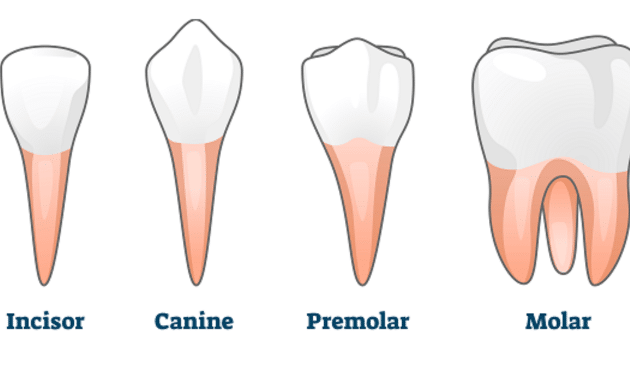
January 19, 2024
Welcome to our dental blog, where we delve into the fascinating world of teeth! Today, we’re exploring the differences between premolars and molars – two types of teeth that play essential roles in chewing and maintaining oral health. Whether you’ve been curious about what sets these teeth apart or simply want to expand your knowledge on dental anatomy, this article has got you covered. So sit back, relax, and let’s embark on a journey through the intricate details of premolars and molars!
Understanding Teeth Anatomy
Teeth are incredible structures that allow us to chew, speak, and flash our winning smiles. Understanding their anatomy is key to appreciating the complexities of oral health. Each tooth consists of different components with specific functions.
At the core lies the pulp, a soft tissue containing nerves and blood vessels. Surrounding it is dentin, a hard substance that forms the majority of the tooth structure. We have enamel – a durable outer layer protecting the tooth from wear and tear.
But let’s shift our focus to premolars and molars specifically. These teeth fall under the category of “posterior” teeth as they’re located towards the back of your mouth. They are larger compared to incisors and canines since their primary purpose is grinding food into manageable bits before swallowing.
Premolars typically have two cusps or pointed areas on their chewing surface, while molars boast four or five cusps for maximum efficiency in breaking down food particles.
Now that we’ve established an understanding of dental anatomy, let’s explore how premolars and molars differ in terms of shape, function, location within the mouth, and overall importance for maintaining good dental health!
The Function of Premolars and Molars
Premolars and molars play important roles in our oral health. These teeth are located towards the back of the mouth, known as the posterior region. While both premolars and molars have similar functions, there are some differences between them.
Premolars are transitional teeth that come after the canines (also called cuspids) and before the molars. They have a flatter surface with cusps or small bumps on top, which makes them ideal for crushing food into smaller pieces. Premolars help us chew our food effectively before it reaches the powerful molars at the back.
On the other hand, molars are larger and stronger than premolars. They have a more complex structure with multiple cusps designed to grind and crush food thoroughly before swallowing. Molars also aid in proper jaw alignment by providing support for facial muscles while chewing.
Both premolars and molars contribute significantly to our overall dental function. Without these teeth, we would struggle to break down food properly, leading to difficulties in digestion. Additionally, having healthy premolars and molars ensures that neighboring teeth stay aligned correctly without shifting due to empty spaces or gaps.
Differences in Shape and Size
Premolars and molars, two types of teeth in our mouths with distinct functions, also vary in terms of their shape and size.
Let’s start by discussing the premolars. These teeth are located towards the front of our mouths, right behind the canines. Premolars have a flatter biting surface compared to other teeth, making them ideal for grinding food into smaller pieces before swallowing. They typically have two cusps or points on their chewing surface.
In contrast, molars are found at the back of our mouths. They have a larger size and more complex structure compared to premolars. Molars possess multiple cusps that help facilitate efficient chewing and grinding of food particles. Their broad surfaces make them perfect for crushing tougher foods like meat or fibrous vegetables.
The differences in shape and size between premolars and molars allow each type to carry out its specific function effectively. While premolars assist in breaking down food into manageable pieces for digestion, molars handle more demanding tasks, such as pulverizing harder substances.
Understanding these variations helps us appreciate the complexity and efficiency of our dental anatomy! So next time you’re enjoying a meal, take a moment to consider how your premolars and molars work together to ensure proper mastication!
Location in the Mouth
Premolars and molars are both types of teeth that play important roles in our oral health. One key difference between these two types of teeth is their location in the mouth.
Premolars, also known as bicuspids, are located towards the front of the mouth, just behind the canine teeth. Typically, adults have a total of eight premolars – four on each side of the upper and lower jaws. These teeth have a flat biting surface with two cusps or points, which allows them to grind and chew food efficiently.
On the other hand, molars are situated at the back of the mouth. They are larger and stronger than premolars because they need to handle more force during chewing. Adults typically have 12 molars – six on each side of both upper and lower jaws. Unlike premolars, molars have a flatter surface with multiple cusps that enable them to crush and grind tough food particles.
The placement of premolars towards the front helps initiate proper digestion by breaking down smaller pieces into smaller parts before they reach the back for further grinding by molars. The position of the molars at the rear ensures efficient mastication by providing enough space for thorough grinding and crushing.
Understanding these differences in location is essential when it comes to maintaining good oral hygiene practices like brushing and flossing effectively around all areas within your mouth. Neglecting any part can lead to dental issues such as cavities or gum disease if not properly cared for.
Types of Teeth Based on Function
Our teeth are not just about aesthetics; they serve different functions when it comes to chewing and maintaining our oral health. Understanding the types of teeth based on their function can help us appreciate the intricate design of our mouths.
Incisors are the sharp, thin-edged teeth at the front of your mouth. They play a crucial role in biting into food and cutting it into smaller pieces. Canines, often referred to as “eye teeth,” have a pointed shape that helps tear and grip food.
Premolars, also known as bicuspids, are located between canines and molars. They have a flat surface with two cusps or points, which aid in grinding and crushing food particles.
Molars are large, flat-surfaced teeth towards the back of your mouth. These powerhouse teeth contain multiple cusps designed for extensive grinding and crushing action required for breaking down tough foods like meat or fibrous vegetables.
Each type of tooth has its unique shape and size tailored specifically for its designated tasks during mastication (chewing). This diversity allows us to process various textures while ensuring optimal digestion efficiently.
Understanding these distinctions helps highlight the importance of proper dental care for each set of teeth. Regular brushing, flossing, dental check-ups along with a balanced diet contribute immensely to overall oral health.
So next time you take a bite out of your favorite meal, think about how each type of tooth is playing its part in helping you enjoy every delicious morsel!
Dental Health: Importance of Premolars and Molars
- Dental health is crucial for overall well-being, and understanding the importance of premolars and molars can help us maintain a healthy mouth. These teeth play a vital role in chewing and grinding food, aiding in proper digestion.
- Premolars are located between the canine teeth and molars. They have a flatter surface with ridges or cusps that assist in tearing and crushing food particles. With their strategic placement, premolars contribute to efficient chewing.
- On the other hand, molars are situated at the back of the mouth, behind the premolars. They have a larger size compared to premolars and possess multiple cusps designed for heavy-duty grinding. Molars aid in further breaking down food into smaller pieces before swallowing.
- Both premolars and molars support proper dental alignment by helping to preserve space for permanent teeth to erupt naturally during development. Additionally, they play a significant role in maintaining facial structure by providing support to cheeks and lips.
- To ensure optimal dental health, it’s essential to take care of these teeth through regular brushing, flossing, and routine visits to the dentist. Neglecting oral hygiene can lead to tooth decay or gum disease, which can impact your overall health.
Understanding the difference between premolars and molars is essential for gaining insight into our dental anatomy and overall oral health. While both types of teeth play a crucial role in chewing and grinding food, they differ in terms of shape, size, location, and function.
Premolars are located towards the front of the mouth, behind the canine teeth. They have a flat biting surface with sharp cusps that help tear and crush food particles. On the other hand, molars are found at the back of the mouth and have a larger surface area with multiple cusps designed to grind down food more effectively.
In terms of size, premolars tend to be smaller than molars. Their compact structure allows them to fit snugly within our dental arches. Molars, on the other hand, are much larger due to their unique role in chewing tough or fibrous foods.
Both premolars and molars contribute significantly to our overall dental health. The intricate grooves on their surfaces can easily trap plaque and bacteria if not properly cleaned through regular brushing and flossing. Neglecting these teeth could lead to tooth decay or gum disease over time.
Regular visits to your dentist for professional cleanings as well as maintaining good oral hygiene practices at home will help ensure that both your premolars and molars remain healthy throughout your lifetime.






